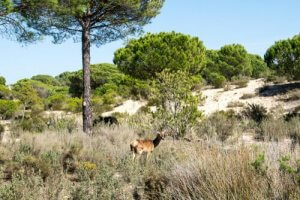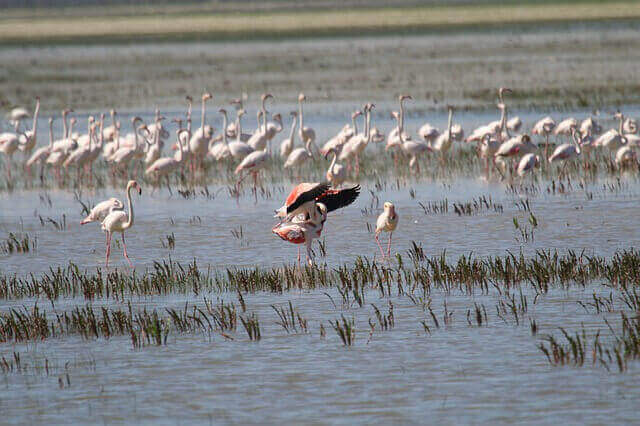The Natura 2000 Network


Written and verified by the vet Érica Terrón González
The Natura 2000 Network is a European ecological network of biodiversity conservation areas. It’s part of European Union initiatives to preserve the natural spaces and resources of Europe’s natural heritage.
How did Natura 2000 begin?
In 1992, the Natura 2000 Network emerged as a result of the Habitats Directive, Directive 92/43/EEC. This directive relates to the conservation of natural habitats and wild fauna and flora.
This network aims to guarantee the maintenance or restoration of natural habitats and the species that live there.
Objectives of the habitats directive
The Habitats Directive aims to protect natural habitats and wild species in the European Union through the establishment of an ecological network and a legal framework for protecting species. However, this directive doesn’t cover birds.
The directive identifies more than 200 types of habitat and more than 900 species of interest. It then states that measures should be taken to maintain or restore them to a favorable condition.

Other objectives
The directive urges the importance of establishing functional links between these areas and the surrounding areas in order to maintain ecological coherence. It also aims to establish a global protection system for wild species and to regulate their exploitation.
Annex V includes species of community interest where measures to regulate their capture or exploitation apply. In annex VI, there’s a list of prohibited methods and means of capture and slaughter.
What were the objectives of creating the Natura 2000 network?
The Natura 2000 network also relates to the Birds Directive on the conservation of wild birds, Directive 2009/147/EC. This is because it includes areas for the protection of birds and their declared habitats.
The aim of the Natura 2000 network is to guarantee the conservation of certain habitats and species. In order to do this, it has special areas for their protection and conservation.
The network consists of:
- Special Conservation Areas (ZEC), where natural habitats and wildlife are protected.
- Site of Community Importance (SCI). Once the relevant conservation measures have been adopted, the SCIs are declared by the European Union as ZECs.
- And Special Protection Areas (SPA) for birds.
The first two are established according to the Habitats Directive, and the SPAs according to the Birds Directive.

The Natura 2000 Network in Europe
Based on the Habitats Directive, each State proposes a list of places that might be important to the European community.
From the national lists, the European Commission then prepares an SCI List in collaboration with the individual states. The Habitat Committee then receives the list and decides whether or not to approve it. Once approved, individual states designate these places as special conservation areas as soon as possible.
The Birds Directive, on the other hand, doesn’t have a standardized procedure for the selection and designation of SPAs.
It’s enough that the criteria is scientific. In fact, the European Commission uses BirdLife International’s inventory as a benchmark.
Member states directly choose SPAs themselves.
The Natura 2000 Network in Spain

The Birds and Habitats Directives is part of the Spanish legal system through Law 42/07 on Natural Heritage and Biodiversity.
The network in Spain currently consists of 1467 LIC and 644 ZEPA. Together they make up a total area of more than 81,000 square miles. About 28,000 square miles of that is sea, and more than 52,000 square miles of that is land, which represents approximately 27% of Spanish territory.
The Natura 2000 Network is a European ecological network of biodiversity conservation areas. It’s part of European Union initiatives to preserve the natural spaces and resources of Europe’s natural heritage.
How did Natura 2000 begin?
In 1992, the Natura 2000 Network emerged as a result of the Habitats Directive, Directive 92/43/EEC. This directive relates to the conservation of natural habitats and wild fauna and flora.
This network aims to guarantee the maintenance or restoration of natural habitats and the species that live there.
Objectives of the habitats directive
The Habitats Directive aims to protect natural habitats and wild species in the European Union through the establishment of an ecological network and a legal framework for protecting species. However, this directive doesn’t cover birds.
The directive identifies more than 200 types of habitat and more than 900 species of interest. It then states that measures should be taken to maintain or restore them to a favorable condition.

Other objectives
The directive urges the importance of establishing functional links between these areas and the surrounding areas in order to maintain ecological coherence. It also aims to establish a global protection system for wild species and to regulate their exploitation.
Annex V includes species of community interest where measures to regulate their capture or exploitation apply. In annex VI, there’s a list of prohibited methods and means of capture and slaughter.
What were the objectives of creating the Natura 2000 network?
The Natura 2000 network also relates to the Birds Directive on the conservation of wild birds, Directive 2009/147/EC. This is because it includes areas for the protection of birds and their declared habitats.
The aim of the Natura 2000 network is to guarantee the conservation of certain habitats and species. In order to do this, it has special areas for their protection and conservation.
The network consists of:
- Special Conservation Areas (ZEC), where natural habitats and wildlife are protected.
- Site of Community Importance (SCI). Once the relevant conservation measures have been adopted, the SCIs are declared by the European Union as ZECs.
- And Special Protection Areas (SPA) for birds.
The first two are established according to the Habitats Directive, and the SPAs according to the Birds Directive.

The Natura 2000 Network in Europe
Based on the Habitats Directive, each State proposes a list of places that might be important to the European community.
From the national lists, the European Commission then prepares an SCI List in collaboration with the individual states. The Habitat Committee then receives the list and decides whether or not to approve it. Once approved, individual states designate these places as special conservation areas as soon as possible.
The Birds Directive, on the other hand, doesn’t have a standardized procedure for the selection and designation of SPAs.
It’s enough that the criteria is scientific. In fact, the European Commission uses BirdLife International’s inventory as a benchmark.
Member states directly choose SPAs themselves.
The Natura 2000 Network in Spain

The Birds and Habitats Directives is part of the Spanish legal system through Law 42/07 on Natural Heritage and Biodiversity.
The network in Spain currently consists of 1467 LIC and 644 ZEPA. Together they make up a total area of more than 81,000 square miles. About 28,000 square miles of that is sea, and more than 52,000 square miles of that is land, which represents approximately 27% of Spanish territory.
All cited sources were thoroughly reviewed by our team to ensure their quality, reliability, currency, and validity. The bibliography of this article was considered reliable and of academic or scientific accuracy.
- Red Natura 2000 | Figuras de Protección de los Espacios Naturales Protegidos de Gran Canaria [Internet]. Figurasdeprotecciondegrancanaria.es. [cited 6 December 2019]. Available from: http://www.figurasdeprotecciondegrancanaria.es/index.php?pagina=red_natura
- Red Natura 2000 [Internet]. Miteco.gob.es. [cited 7 December 2019]. Available from: https://www.miteco.gob.es/es/biodiversidad/temas/espacios-protegidos/red-natura-2000/
- Directiva Hábitats [Internet]. Miteco.gob.es. [cited 7 December 2019]. Available from: https://www.miteco.gob.es/es/biodiversidad/temas/espacios-protegidos/red-natura-2000/rn_pres_leg_dir_habitat_info_basica.aspx
This text is provided for informational purposes only and does not replace consultation with a professional. If in doubt, consult your specialist.








